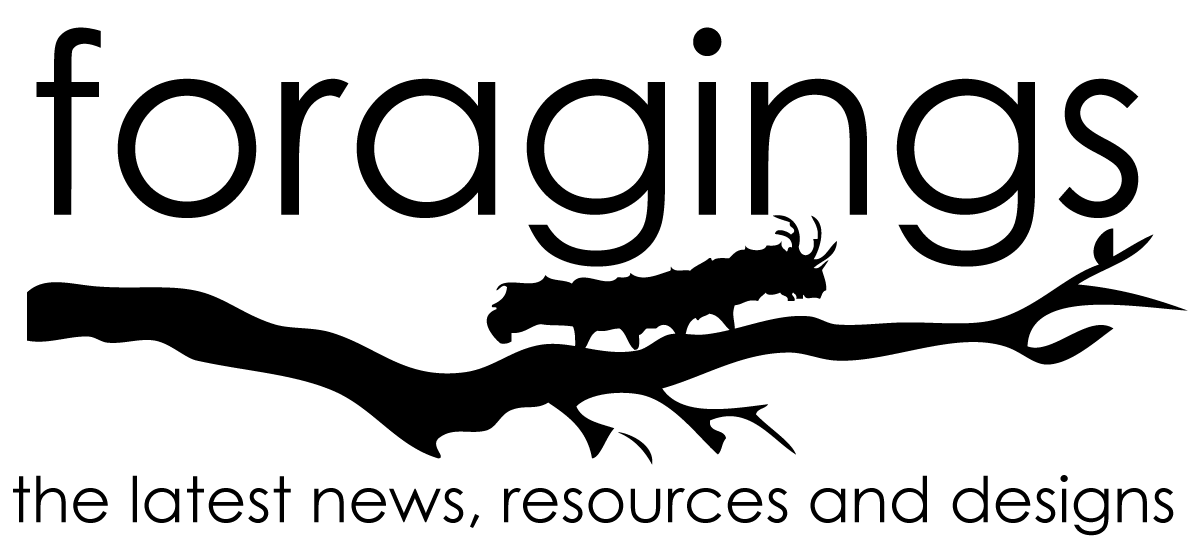News
- Answers About Urban Wildlife:: This is not a new feature from the NY Times, but still a very interesting one about urban wildlife. It features questions about urban wildlife and answers from the director of Urban Park Rangers. There are a series of these features including Answers About Urban Wildlife, Part 2 and Answers About Urban Wildlife, Part 3.
- Bug hotels offer wintering spot for garden helpers:: Insect hotels are finally making their way here to the United States thanks to one of the founders of the Urban Hedgerows project. This article features some recent designs and offers up some basic instructions about how to build an insect hotel.
- Endangered Squirrels Using Poles to Glide Across Road:: From the Outdoor News Daily, this article features a project in North Carolina designed to help the endangered Carolina Flying Squirrel by building special poles to help the squirrels glide across a skyway. Previous to the poles the squirrels never crossed the skyway and now they have been found on both sides.
- Traffic noise is ‘bad for foraging bats’:: BBC Earth News features a new study which found the noise of traffic affects the ability of bats to listen for their prey.
- Guerrilla gardening and wildlife:: A BBC Gardeners’ World blog discusses the potential of guerrilla gardening on vacant and neglected sites for wildlife…”brownfield sites have become unlikely areas of high insect biodiversity, some of which are now home to as many insect species as ancient woodland. So, rather than being waste areas, ripe for development, they form an important mosaic habitat for many creatures.”
Resources
- CorridorDesign: GIS tools and information for designing wildlife corridors:: This is a fantastic resource for anybody working with GIS. Besides the resources about corridor design, there is a GIS Toolbox that “aids the user in 1) creating habitat suitability models & identifying potential habitat patches, 2) creating corridor models, and 3) transforming a DEM into a topographic slope position raster.” There are also some pretty nice resource documents about designing corridors.
- Book details 30-year study of suburban garden wildlife:: A forthcoming book, profiled by Horticulture Week, will document a detailed, 30-year record of a suburban garden. Over the study the author found “found 2,673 plants and animals in her garden in her 1972-2001 survey, including 474 plants, 1,997 insects and 138 other invertebrates, as well as 54 birds and seven mammals.”
- Environmental Urbanism Panel Discussion:: Jason King from Landscape + Urbanism wrote up a good summary of a discussion I attended a little over a week ago with three, really interesting speakers. It’s well worth the read.
- Ecology.Agency.Urbanism:: Also from Jason King is coverage of the talk by Chris Reed that went with the panel discussion. Some very interesting ideas were introduced as well as some interesting projects.
Design & Art
- Chelsea Flower Show 2010 – Ten top tips for improving biodiversity:: This page features tips for garden biodiversity and includes examples of gardens from the show in each of the tips. There is a great deal of inspiring ideas among the gardens such as the Growing Working Class Talent garden which included a “wall constructed of sandstone and flint panels (that) has been partly drilled to be a magnet for nesting invertebrates such as the solitary bee and lace wings” and the SAC Strutt and Parker Sustainable Highland Garden which included “water rill and inbuilt insect homes (t0) provide ideal conditions for birds and insects, including the bees from the croft’s hive.”
- Inner City Snail:: This is an interesting art project from London where an artist decorated urban snails.
- Birds of Brooklyn:: An art installation, this one bringing the sounds of birds to the urban street through audio artwork.
- Myrtle Avenue Bird Town:: Another Brooklyn art installation of over 50 bird houses and feeders which is aimed to educate local inhabitants about their wild neighbors.
- Canal Nest Colony:: One more project in Brooklyn, the Canal Nest Colony “is a multi-disciplinary design effort to encourage human-nature interaction, plant and animal biodiversity, and highlight the diverse ecosystem potential of the of the Gowanus Canal in Brooklyn, New York.”




Great to live in a BIG DENSELY POPULATED city that supports wildlife — go NYC.